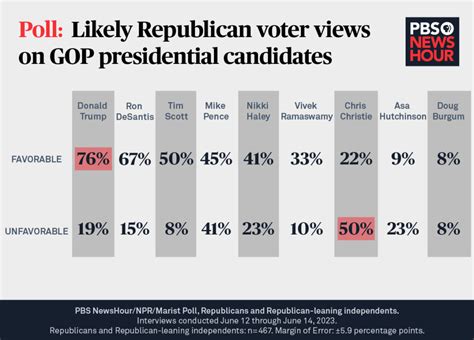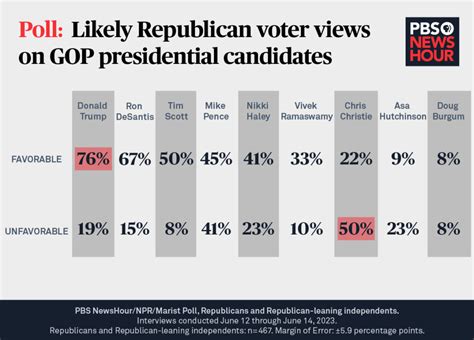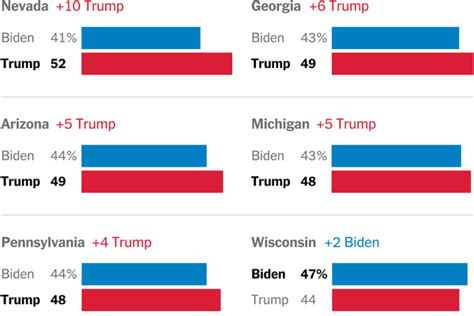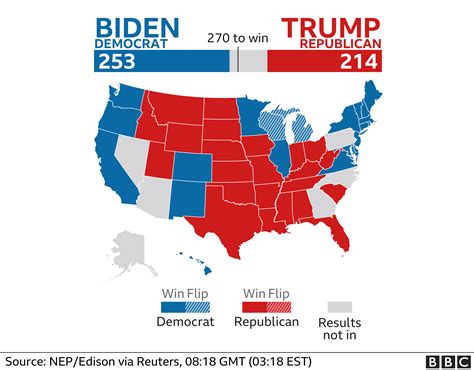Explore current trends in election polling, the impact of social media, big data influence, and evolving voter behavior for enhanced political insights.In the rapidly evolving landscape of democracy, election polling has become a critical tool for gauging public sentiment and predicting electoral outcomes. With advancements in technology and the proliferation of social media, the methods of collecting and analyzing voter data are undergoing transformative changes. This article delves into the current trends shaping election polling, exploring how innovations are enhancing accuracy and engagement. From the impact of big data analytics to shifts in voter behavior, we will uncover how these elements are revolutionizing polling practices. Join us as we navigate the dynamic interface between technology, public opinion, and electoral strategies, providing essential insights that will equip you to understand the future of polling in today’s democratic processes.
Harnessing Technology: Current Trends Shaping Election Polling Methods
As technology continues to advance, its influence on election polling methods has become increasingly significant. The integration of various technological innovations has reshaped the landscape of polling, making it more dynamic and adaptable to the changing political environment. Here are some key current trends in this area:
- Online Polling: With the rise of the internet, online polling has gained popularity due to its ability to reach a wider audience quickly and efficiently. This method allows for real-time feedback and engagement, making it easier to capture public sentiment.
- Mobile Surveys: The proliferation of smartphones has encouraged pollsters to utilize mobile surveys. Polling via apps or SMS not only increases accessibility but also enhances response rates, as participants can engage with polls at their convenience.
- Artificial Intelligence (AI): AI technologies are increasingly being deployed to analyze vast data sets, identify trends, and predict outcomes more accurately. This analytical power enables pollsters to tailor their approaches based on demographic insights and behavioral patterns.
- Social Media Integration: Polls conducted through social media platforms allow for immediate interaction and feedback from voters. This trend harnesses the large user base of platforms like Twitter and Facebook, facilitating a more responsive polling process.
- Geolocation Analytics: By utilizing geolocation data, pollsters can gain insights into regional attitudes and behaviors, allowing them to fine-tune their messaging and outreach efforts based on localized insights.
The reliance on technology in polling not only streamlines the data collection process but also enhances the accuracy and relevance of the insights gained. As these current trends continue to evolve, the field of election polling will likely see even greater innovations, contributing to a more informed electoral process.
Public Engagement: Impact of Social Media on Polling Accuracy
In recent years, social media has emerged as a critical tool in understanding public sentiment and influencing current trends in election polling. Platforms like Twitter, Facebook, and Instagram not only serve as channels for voter engagement, but they also provide a wealth of data that can significantly impact polling accuracy.
The immediacy and widespread reach of social media allow pollsters to gather real-time feedback from a diverse array of voters. Unlike traditional methods of polling, which might rely on callbacks or in-person interviews, social media can capture the evolving opinions of the electorate as events unfold. This dynamic allows for a more nuanced understanding of voter sentiments, especially among younger demographics who are more active online.
However, the influence of social media on polling accuracy is a double-edged sword. While it aids in capturing immediate reactions to political events, it can also lead to echo chambers, where users are only exposed to opinions that reinforce their own views. This phenomenon can skew the perception of voter support and undermine the overall effectiveness of poll results, potentially leading to inaccuracies in predicting election outcomes.
Additionally, misinformation and fabricated narratives spread rapidly on social media, which can further complicate the polling landscape. This underlines the importance of employing sophisticated data verification methods and cross-referencing social media sentiment with traditional polling techniques to produce reliable insights.
To adapt to these current trends, many polling organizations are increasingly integrating social media analytics into their methodology. By analyzing metrics such as engagement rates, shares, and sentiment analysis, pollsters can develop a more comprehensive view of public opinion that may not be reflected in conventional polling alone. This integration encourages a multidimensional approach to gathering and interpreting electoral data, positioning campaign strategies to be more responsive and reflective of the electorate’s sentiments.
Data Analytics: How Big Data Influences Current Trends in Polling
In today’s digital age, the landscape of election polling has undergone a significant transformation, largely driven by current trends in data analytics and big data technologies. The vast amounts of data generated from various sources—social media, online surveys, and voter databases—play a critical role in shaping the polling strategies adopted by political organizations and pollsters.
One of the primary benefits of utilizing big data is the ability to segment and analyze voter demographics more effectively. Pollsters can now tailor their methodologies to capture more precise insights by examining different voter groups based on various parameters such as age, gender, location, and voting history. This level of granularity allows for a nuanced understanding of voter sentiment and behavior.
| Data Source | Influence on Polling |
|---|---|
| Social Media Activity | Real-time sentiment analysis and trending opinions |
| Online Surveys | Increased respondent accessibility and diversity |
| Voter Databases | Enhanced targeting and predictive analytics |
Furthermore, machine learning algorithms have emerged as a powerful tool in the analysis of polling data. By processing large datasets, these algorithms identify patterns and trends that might go unnoticed through traditional methods. As a result, polling organizations can make more accurate predictions regarding election outcomes, while also adapting their strategies in real time based on changing voter sentiments.
The intersection of big data analytics and polling practices reflects broader current trends in how we understand and engage with democratic processes. As technology continues to evolve, we anticipate further advancements that will redefine how polling is conducted and interpreted, ensuring that it remains a vital component of electoral strategy.
Voter Behavior: Understanding Shifts in Attitudes Through Polls
As electoral dynamics evolve, understanding voter behavior has become essential in interpreting current trends in polling. Polls serve as a mirror reflecting the attitudes and preferences of the electorate, revealing key insights into how shifts occur over time.
One prominent factor influencing voter behavior is the socio-economic landscape. Economic fluctuations, social justice movements, and public health crises can significantly alter public perceptions and priorities. For instance, during a recession, voters may prioritize economic stability over other issues, prompting changes in polling results. Pollsters must adapt to capture these nuanced shifts effectively.
Another aspect influencing voter behavior is generational change. The perspectives of younger voters often differ markedly from those of older demographics, leading to notable divergences in polling outcomes. By leveraging surveys and analytics, campaign strategists can tailor their messages to resonate with specific voter groups, reflecting the current trends that shape their preferences.
Furthermore, voter sentiment can also be swayed by external events, such as debates, scandals, or significant news stories. These events frequently prompt immediate shifts in public opinion, and responsive polling can help campaigns pivot their strategies effectively. Real-time polling allows candidates to understand how voters react to unfolding news, ensuring their platforms remain impactful and relevant.
Overall, polling is not just a tool for predicting election outcomes; it is a critical connector to understanding voter behavior. By analyzing the current trends reflected in polling data, parties can unlock insights that guide their policies, communications, and outreach efforts, ultimately contributing to a more informed and engaged electorate.
Election Insights: The Results of Adopting Current Trends in Polling Practices
As the landscape of election polling evolves, understanding the ramifications of adopting current trends becomes essential for political analysts, campaign strategists, and voters alike. The integration of advanced methodologies not only enhances the accuracy of predictions but also provides deeper insights into voter sentiment and behavior.
One of the most significant outcomes of embracing current trends in polling practices is the rise in precision of voter turnout forecasts. Innovations in data collection methods and sophisticated analytics enable pollsters to create more reliable models that account for demographic shifts, thus providing a clearer picture of potential election outcomes.
Additionally, the effective use of social media as a polling tool has transformed the way electorates are engaged. Real-time feedback mechanisms allow for the rapid assessment of public opinion, leading to more timely and appropriate campaign adjustments. This responsiveness to voter sentiment not only helps in refining messages but also fosters greater public trust in the polling process.
The table below illustrates some key benefits observed from the adoption of current trends in polling practices:
| Trend | Impact |
|---|---|
| Data Analytics Integration | Improved accuracy in voter predictions |
| Social Media Engagement | Enhanced real-time feedback and public trust |
| Technological Adoption | More sophisticated voter demographic analysis |
| Mobile Polling | Increased reach, especially among younger voters |
The commitment to adopting current trends in election polling not only bolsters the effectiveness of political campaigns but also contributes to a more informed and engaged electorate. As polling techniques continue to advance, the lessons learned from implementing these trends will shape the future of political discourse and voter engagement.
Frequently Asked Questions
What are the current trends in election polling?
Current trends show a significant rise in the use of online polling methods, incorporating social media platforms to reach diverse voter demographics.
How has technology impacted election polling?
Technology has streamlined data collection and analysis, enabling pollsters to quickly adjust their methodologies and target specific voter groups more effectively.
What role does social media play in election polling?
Social media platforms serve as valuable tools for gathering real-time public opinion, allowing pollsters to gauge voter sentiments and preferences more accurately.
Are traditional polling methods still relevant?
While traditional methods like telephone polling remain relevant, their effectiveness is diminishing as fewer people are willing to participate, leading to a shift towards digital approaches.
What challenges do pollsters face in the current environment?
Pollsters face challenges such as declining response rates, the increasing diversity of media consumption, and the potential for misinformation to skew public perception.
How accurate are modern election polls?
Modern election polls can be quite accurate, but their reliability often hinges on proper methodology, sampling techniques, and the timing of the polls.
What can voters do to interpret polling data?
Voters should look at multiple polls, consider the methodologies used, pay attention to margins of error, and be cautious of polls that seem too favorable or unfavorable to any particular candidate.









